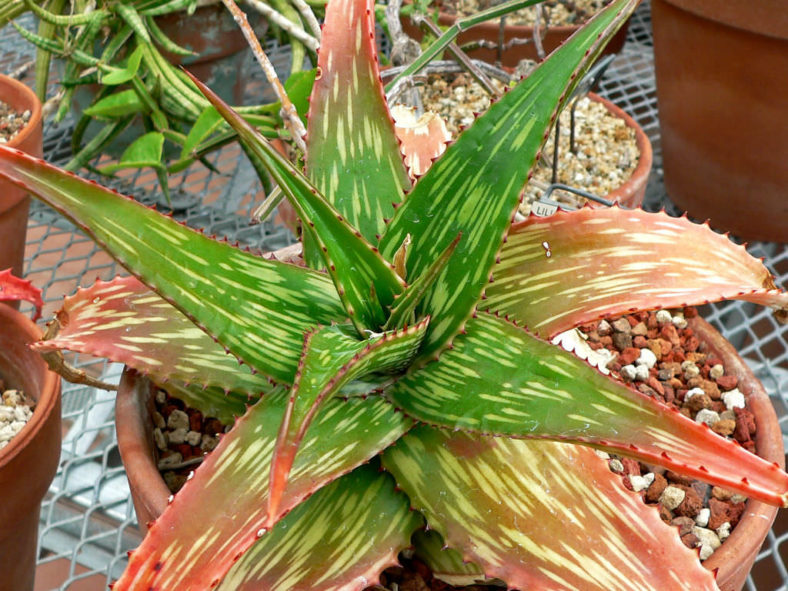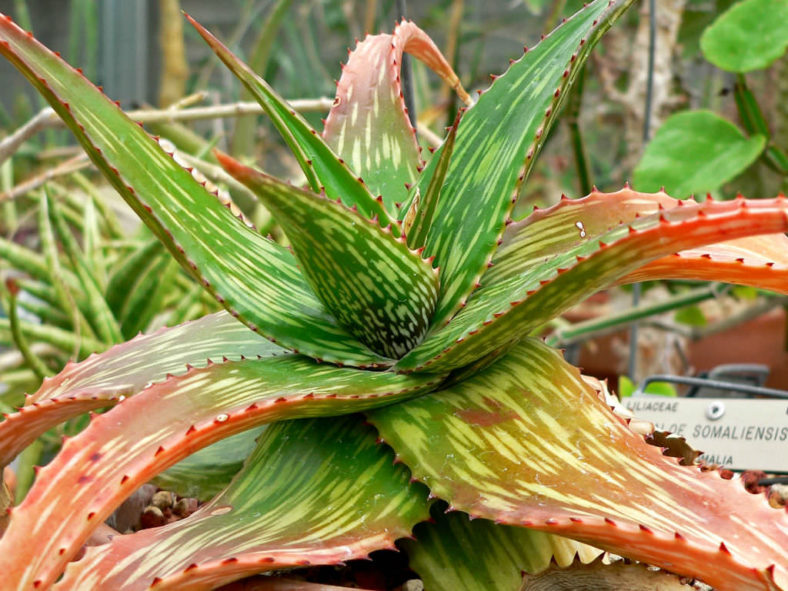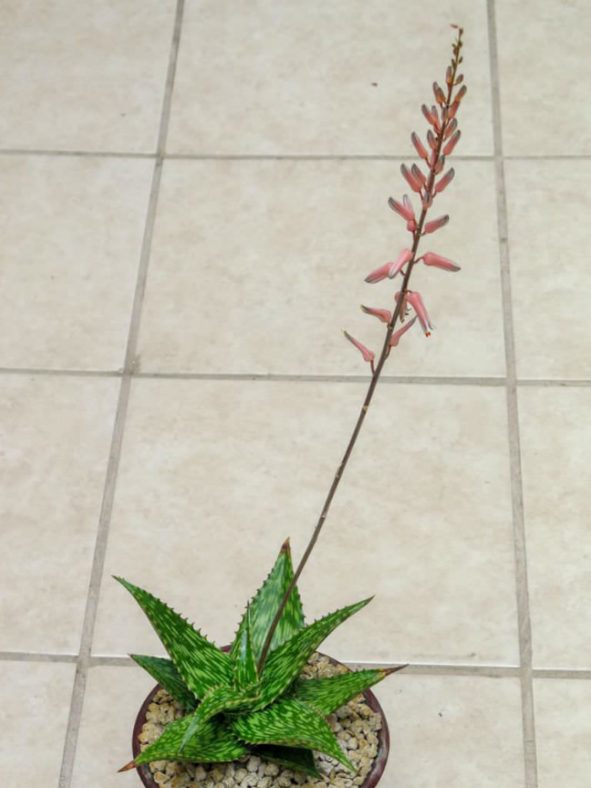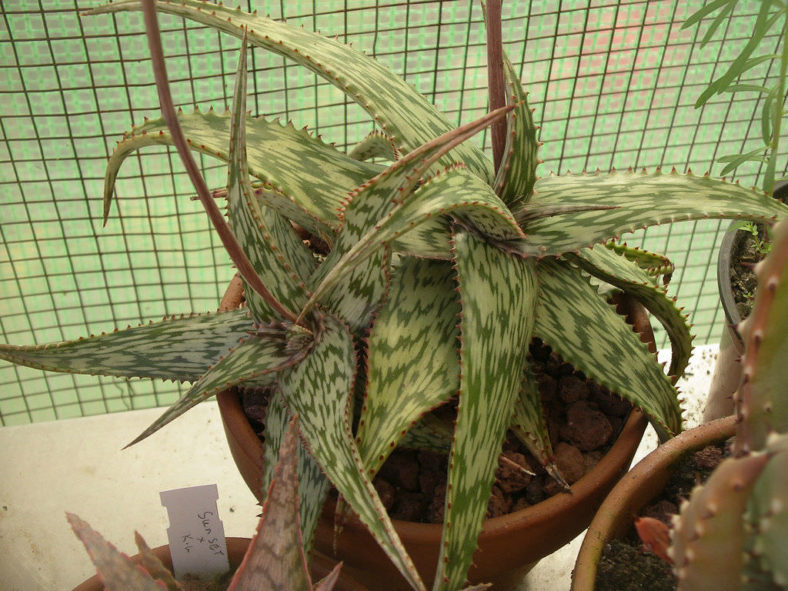Scientific Name
Aloe somaliensis C.H.Wright ex W.Watson
Common Name(s)
Somalian Aloe
Synonym(s)
Aloe somaliensis var. marmorata
Scientific Classification
Family: Asphodelaceae
Subfamily: Asphodeloideae
Genus: Aloe
Description
Aloe somaliensis is an attractive succulent that forms stemless or short-stemmed, highly ornamental rosettes of broad, green, often brownish leaves with irregular white markings. It can grow solitary or can create a small clump with age. The leaves are triangular, have pink or brown spines along the margins, and can measure up to 12 inches (30 cm) long and 3.2 inches (8 cm) wide.
The flowers are tubular, pale-pink to red, and appear in late summer on spikes that can grow up to 32 inches (80 cm) tall.
Aloe somaliensis, Aloe hemmingii, and Aloe harlana are very similar and difficult to identify.

Hardiness
USDA hardiness zones 9b to 11b: from 25 °F (−3.9 °C) to 50 °F (+10 °C).
How to Grow and Care
Aloes are very forgiving plants. However, as with all succulents, Aloe must never be allowed to sit in stagnant water, and the plant should be carefully monitored to watch for signs of overwatering.
These succulents are not particularly fast-growing and will only rarely need repotting. However, repot Aloes tipping over their pots or have ceased growing in the spring. Use a fast-draining potting mix with one-third sand or pebbles. When repotting a larger plant, dividing the root ball carefully is possible. Some varieties of Aloe will send off offsets that can be potted independently.
Aloe plants need strong, bright light. They can withstand full summer sun once acclimated. In the winter, provide bright light. It prefers warmer temperatures of 70 to 80 °F (21 to 27 °C) but will survive down to 40 °F (4.5 °C). Feed with a succulent fertilizer in the summer only. Suspend feeding in the winter as the plant goes dormant.
See more at How to Grow and Care for Aloe.
Origin
Aloe somaliensis is native to northern Somalia and Djibouti.
Links
- Back to genus Aloe
- Succupedia: Browse succulents by Scientific Name, Common Name, Genus, Family, USDA Hardiness Zone, Origin, or cacti by Genus
Photo Gallery
Click on a photo to see a larger version.


